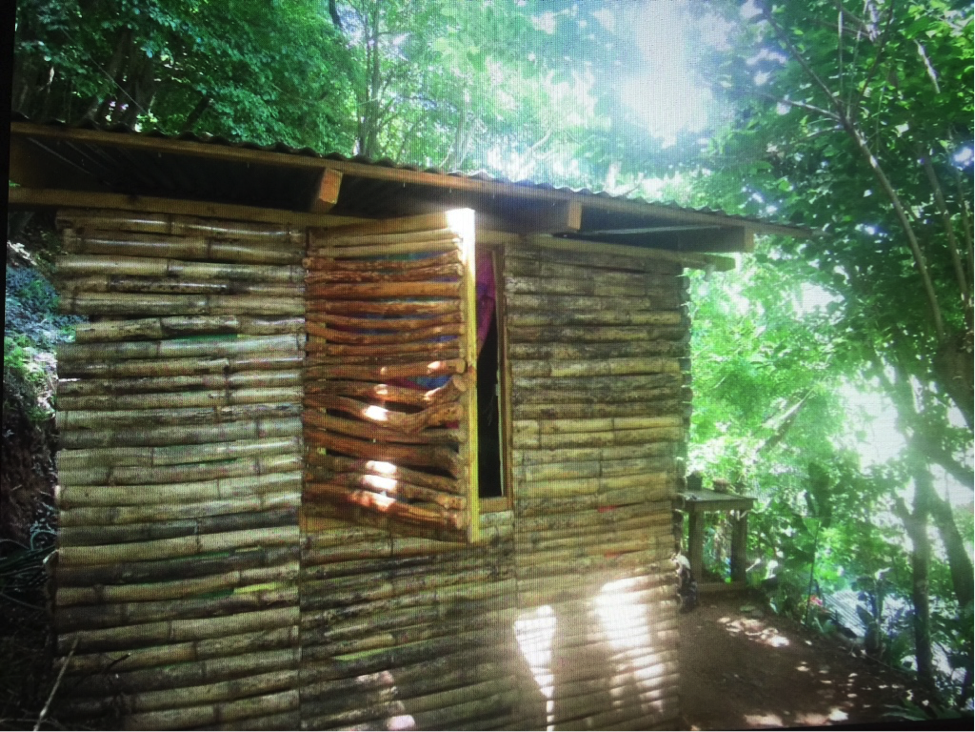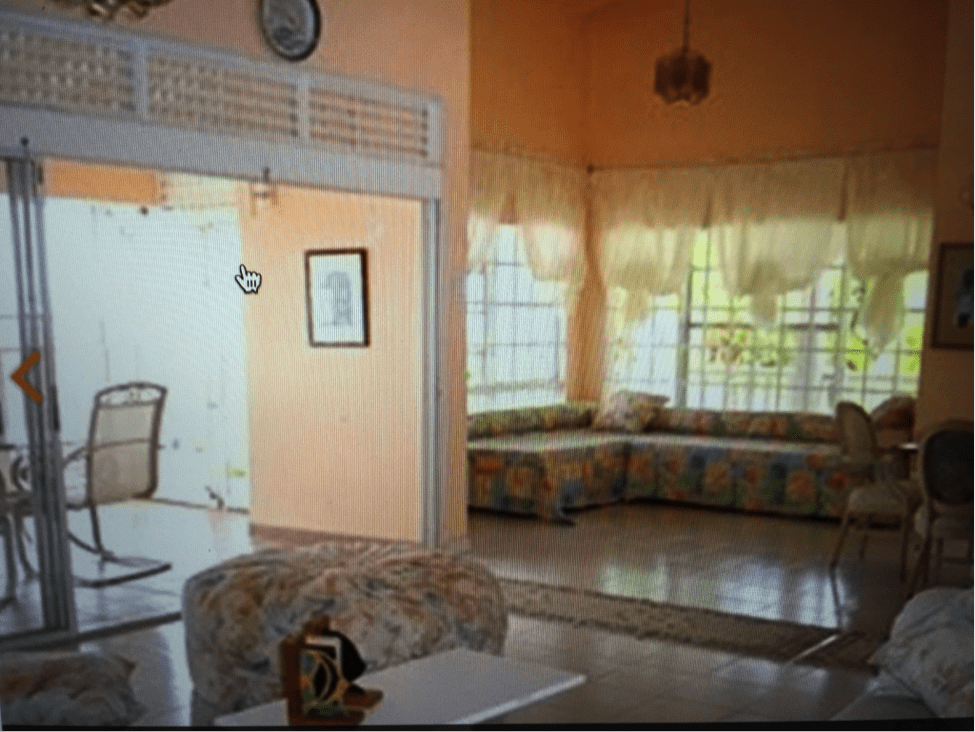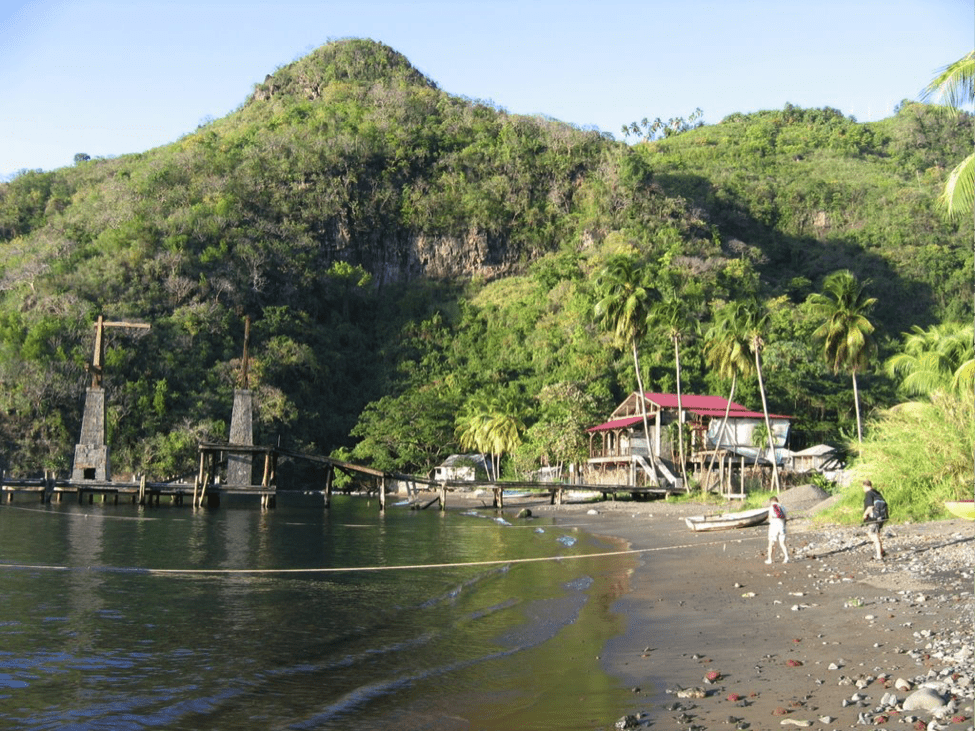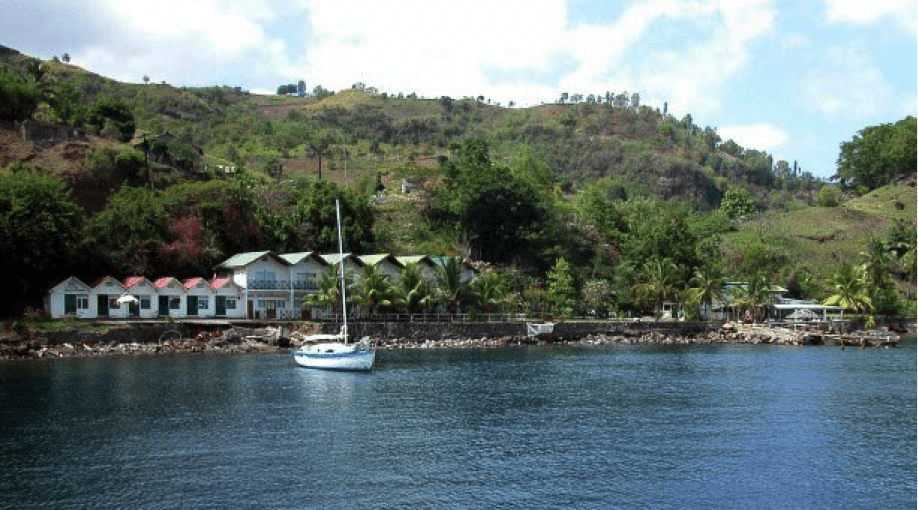The views expressed herein are those of the writer and do not necessarily represent the opinions or editorial position of iWitness News. Opinion pieces can be submitted to [email protected]
It is not sufficient just to point out how many international foreign tourists currently visit the mainland of St. Vincent and the Grenadines (SVG) to understand the probable impact on holiday arrivals of the operation of Argyle International Airport (AIA), as I did in a previous essay.
These numbers need to be placed within the context of overall hospitality accommodation on the mainland to assess their relevance: the number and capacity of existing resorts, hotels, and other establishments; demand for their expansion; and the need to build much larger facilities.
In another earlier essay, I argued that:
“… the mainland has a hotel capacity of only 564 hotel, apartment, and guesthouse rooms, hardly sufficient to accommodate the tens of thousands of new visitors AIA is supposed to attract”.
This assertion was incomplete on two grounds.
First, the 564 number did not include several hotels, apartments, guest houses, and other accommodation not advertised in the trade publication distributed by the SVGTA (see below) from which I derived my data. Nor did it tabulate the type, location, or size of the listed venues and their implications for our tourism industry.
Table 1 lists accommodations compiled from data in the Ins and Outs of SVG 2016, a commercial publication purchased and widely circulated by the SVG Tourism Authority, supplemented by additional rental units I was able to find on various on-line sources.
Table 1. Mainland Resorts, Hotels, Term Rental Apartments, and Guest Houses
| Short Name | Location | Resort | Hotel | Apartments | Guest House | Rooms |
| Adams Apts | Arnos Vale | X | 9 | |||
| Barefoot | Ratho Mill | X | 5 | |||
| Bay Hill | Cane Garden | X | 10 | |||
| Beachcomber | Villa Beach | X | 48 | |||
| Blue Lagoon | Ratho Mill | X | 19 | |||
| Buccament Bay | Buccament | X | 102 | |||
| Cobblestone | Kingstown | X | 26 | |||
| Eco Bay | Arnos Vale | X | 3 | |||
| Fort View | Edinboro | X | 7 | |||
| Grand View | Villa Point | X | 19 | |||
| Grenadine House | Kingstown Park | X | 18 | |||
| Haddon Hotel | Kingstown | X | 19 | |||
| Hillside Apts | Villa | X | 6 | |||
| Alexandria | Prospect | X | 27 | |||
| Marina Hotel | Ratho Mill | X | 5 | |||
| Ridgeview | Ratho Mill | X | 5 | |||
| Rosewood | Villa | X | 10 | |||
| Sunset Shores | Villa Beach | X | 32 | |||
| Mariners Hotel | Villa Beach | X | 20 | |||
| Paradise Beach | Villa Beach | X | 17 | |||
| Tranquility | Indian Bay | X | 7 | |||
| White Sands | Ratho Mill | X | 16 | |||
| Young Island | Young Island | X | 29 | |||
| Heron Hotel | Kingstown | X | 8 | |||
| Rich View | Sion Hill | X | 14 | |||
| Tropical Breeze | Kingstown | X | 12 | |||
| Villa Lodge | Villa | X | 19 | |||
| Harmony Hotel | Harmony Hall | X | ??? | |||
| Macedonia | Cane Hall | X | ??? | |||
| Murray Hts. | Kingstown | X | 30 | |||
| New Montrose | Kingstown | X | 25 | |||
| OD’s Apts | Harmony Hall | X | 8 | |||
| Seasplash | Indian Bay | X | 7 | |||
| Sky Blue | Indian Bay | X | 7 | |||
| Wallilabou | Wallilabou Bay | X | 12 | |||
| Other | — | 119 |
Three qualifications are necessary before addressing what Table 1 says about the need for AIA.
First, the room occupancy of two of these properties is unknown. Given that they are poorly advertised and that two of them are guesthouses, I estimated their cumulative occupancy as 20 rooms.
Second, it is unknown how many of the properties listed are actually going concerns, given the high failure rate of small hotel ventures especially outside of the southwest coastal tourist belt. Still, I have assumed that they are all still in business.

Third, as I pointed out in my earlier treatment of this issue:
“There are a couple hundred more rooms in short-term efficiency units, private homes, small apartment complexes, and duplexes that are not listed or well advertised and thus generally unavailable to international travelers.”
Some of these small operations derive a good part of their income doubling as love nests for middle-aged and older married men (sugar daddies, as they are called all over the world) and their adorable teenaged sugar babies. (Please don’t assume I know this from personal experience!)
I have now taken into account most of the additional rooms (listed from Heron Hotel down in Table 1). I have also tabulated private home and allied rentals of all types and descriptions on various on-line holiday booking and allied sites (TripAdvisor, housetrip, flipkey, VRBO, Airbnb, and the metasite tripping) which yielded some 50 additional entries (assumed to total at least 129 additional rooms because many had two or more bedrooms) and have added these to Table 1 under the heading “Other.” (But it would be unreasonable to add totally unadvertised rental units since these would be inaccessible to international travelers unfamiliar with SVG, precisely the type of tourist AIA is meant to attract.)
This certainly does not include the Bush Bar’s Irie Hut, a three-cottage enterprise consisting of rustic one-room bamboo cold-water shanties with flush toilets and 15 five-star Internet rankings, proudly splashed all over cyberspace and available for a pittance at $US 30.00 ($EC 80.00) per night.
At the other extreme, there is Harmony Penthouse Apartment, a spacious two-bedroom, two-bathroom unit on the upper story of a private home in the inland Harmony Hall area near the southeast coast renting for $US 2,100 ($EC 5,607) per week. But well into October, neither this suite nor the jungle huts in Vermont have any booking for the next 12 months, something they share with most other private rentals.

I found no pricey private accommodation on or adjacent to the southern seaside area between Villa Point and Johnson Point, testimony to how little desirable beachfront property there is on the mainland.
Other private apartment and house rentals are at or under a $US 100 ($EC 267) per night rate, way below comparable accommodation in the Grenadines. In sum, then, my best estimate is that there are 750 or so rooms available for holiday rental on the mainland of SVG (or 25 percent higher than my earlier and much cruder estimate) to accommodate 6,500 tourists coming from extra-Caribbean destinations, figures that are well below the occupancy capacity of the exiting stock of room, even during the November-April high season.
Tranquility Beach Apartment Hotel, a typical no frills establishment at Villa renting for US$70 per night for double occupancy but not actually located on the beach
But not all hotels, resorts, apartments, guesthouses, and private homes are occupied by tourists from North American and Western Europe. Many are also rented by overseas nationals, Caribbean visitors (presumably including nationals), and various categories of business people. The precise number of such mainland guests is not presented in the SVGTA data, but once again some reasonable estimates are possible from the numbers provided.
To repeat what I said about this in a previous essay, among the things we do know relevant to this analysis is that in 2015 (based on figures kindly supplied to me by the SVGTA), a year that saw the highest stop-over arrivals since 2009, is: how many stopover visitors arrived in SVG (66,612); how many of these were holidayers (33,630); how many people who landed at all five airports in SVG stayed in hotels, resorts, villas, apartments, guest houses, and other commercial establishments (27,366); and how many lodged in private homes (34,886).
Given that the Grenadines are a far more popular tourist destination than the mainland, I conservatively estimate that no more than 70 percent of those who landed on the mainland stayed at commercial establishments, an educated guess that translates into nearly 20,000 people, including holidayers, business people, and others. (Conversely, I assume that most of the 34,428 people who sojourned in private homes were mainly Vincentian nationals residing elsewhere who came to visit friends and relatives, an assumption partly based on a perusal of Internet private-home travel sites, a topic I will address again elsewhere.)
These 20,000 people made up some 40 percent of the 50,271 who landed at E.T. Joshua International Airport in 2015.
In discussing a comparable situation to ours, Gregor Nassief, President of the Dominica Hotel and Tourism Association, argued that:
“It is useful to reflect on the experience of St. Lucia & Grenada. St. Lucia’s Hewanorra International Airport was built by the US Military and handed over to St. Lucia in 1952 (effectively a gift to the island). It became operational with a new control tower in the early 1970s and did not see serious internationally scheduled flights until 10 years later, when St. Lucia already had over 2,000 hotel rooms and double the arrivals we [in Dominica] have today (and that was 30 years ago!). Grenada’s Maurice Bishop International Airport was completed in 1984, also substantially a gift to the island (first built by the Cuban Government, then finished with funding from various donor agencies).
Similarly, for Grenada, it took about 10 years to see regularly scheduled international flights, by which time Grenada already had over 1,000 hotel rooms”.

The first line of evidence to support the assertion that the demand for rooms pushes their supply (rather than the other way around) which then pushes supporting infrastructure like an international airport (again, rather than the other way around) is the small size of our existing establishments. The average room number of the 35 hotels, apartment complexes, and guest houses in Table 1 (discounting “Other”) is 18. It would be far less than this if not for the troubled Buccament Bay Resort which alone makes up a whopping 16 percent of all rooms in named accommodation.
So the second error in my earlier analysis was to opine that, “… the mainland [stock of] hotel, apartment, and guesthouse rooms [is] hardly sufficient to accommodate the tens of thousands of new visitors AIA is supposed to attract.”
What my new and more accurate figures say is that the current supply of rooms far exceeds the demand for them. If all existing rooms were occupied every day of the year by two people staying for two weeks, this would require 39,000 guests (750 rooms x 2 people x 26 two-week blocks), or double the present number. If an average of only 65 percent of rooms were occupied throughout the year (the same rate as tourism powerhouse Barbados, they would still require 25,350 guests, over 5,000 more than my 20,000 estimate of foreign tourist visitors in 2015.
If the true occupancy rate were 50 percent, this would require only 19,500 guests, or about as much as we now receive. Indeed, a 50 percent rate would place us at the same level as Dominica, a country with a much higher level and proportion of foreign stayover visitors.
A 50 percent occupancy rate would also create an equilibrium between supply and demand based on what we economists call “perfect competition”—a huge number of actual and potential consumers and enough independent establishments whose locale, description, features, prices, and customer reviews are publically known to ensure competitive prices and selection.
Alas, “equilibrium” and “perfect” in economic terms would only mean financial distress, if not bankruptcy, for many hoteliers unable to pay their bills or their staff given the actual occupancy rate – a figure that is surely closer to 30 percent than 50 percent, given the visitor numbers for Dominica (see below), a country with only 500 hotel rooms, according to Mr. Nassief. (Even if these numbers were inflated to the same rate as our 750 based on the assumption that his figures don’t include rooms not advertised in officially-sanctioned publications, a 30 percent annual occupancy figure may be on the high side.)
A low occupancy rate is also suggested by the chronic inability of our largest and most expensive facility, Buccament Bay Hotel and Resort, to pay the millions owed to its workers, contractors, suppliers, and the government of SVG, an observation confirmed by the fact that it has plenty of cottages available for rent as I write these words for the prime Dec. 17-31 Christmas period.
A tenancy rate way below 50 percent would also suggest that most of the 5,039 Caribbean visitors who came here in 2015 to visit friends and relatives lodged with these people rather than in commercial establishments, thereby adding relatively little to our foreign exchange earnings or other revenue in the process.
By comparison, in Dominica, a Caribbean country with which we share the absence of an international airport, about 56,600 people, or 76 percent of the total 74,474 stayover airport arrivals (a number very similar to ours), were foreign visitors. The obvious reason for this 24 per cent disparity between the two countries is that Dominica has far more and far better natural tourist attractions than the mainland of St. Vincent, as I will show in a subsequent essay, but could easily accommodate thousands more stayover visitors with its current supply of rooms.
Whatever the true mainland occupancy rate, many of our hoteliers besides Dave Ames who runs the Buccament Bay operation are barely treading water, an assumption that is borne out by the number that are shuttered during the low season (May to November), the plethora of mom-and-pop establishments with 10 rooms or less, and the many small hotels and guest houses that have failed or repeatedly changed hands over the years.
In addition, discounting “Other,” the establishments under 10 rooms (which represent nearly half of all private facilities), are mainly low-budget enterprises that were probably disproportionately occupied by the 6,908 Caribbean visitors who came to the mainland on business in 2015. Conversely, the two all-inclusive beach resorts at Buccament Bay and Young Island are pricey facilities whose cottages are rented mainly by well-heeled overseas vacationers.
My main point in all of this is that, taken together, these figures and observations suggest that the very last thing SVI needs are more hotel and resort rooms. Indeed, what we need most of all is to stimulate the arrival of tens of thousands more tourists by increasing and improving our existing recreational resources and allied infrastructure and by creatively advertising our holiday strengths and attractions in our main North American and Western European markets.
Instead, all the government seems to be doing –– besides trying to build an superfluous airport at Argyle — is accumulating worthless air service agreements with Qatar, Chile, and the United Arab Emirates, countries whose residents will never come here on holiday, and hectoring the private sector to build more hotels and resorts and expand existing ones for non-existent additional guests, an unfair blame-and-shame campaign also conducted by our country’s newspapers.
The need to refocus our tourism strategy – or give up on tourist growth and go back to farming, our only other development option — is no better seen than by observing the situation faced by of our best and largest facilities, those with 20 or more rooms situated at or near the sea, most of them operating well below capacity even during the winter season. All other smaller establishments are located far from any beach because we have so little tourist-friendly beachfront. There are only two coastline hotels on the entire Leeward side, the location of our most suitable beaches in size and recreation potential (swimming, beach sports, sunbathing, snorkeling, kayaking, etc.), one on Buccament Bay with a phony imported white-sand shoreline and the other an establishment with a decrepit dining and bar area at Wallilabou sharing a badly eroded and sand-mined seaside with the fast disappearing remains of the Pirates of the Caribbean movie set whose on-line booking requests go answered.

But none of our shortcomings or the experience of genuine tourist islands are of any concern to the present regime whose members keep proclaiming that AIA is bound to magically transform our sow’s ear of a mainland holiday destination into a silk purse of international renown.
No wonder that more people are finally waking up to the fact that AIA is being built strictly for political show and control – an ostentatious expression of “Labour Love” and dynastic succession — rather than for economic development and employment growth.
This is the 36th in a series of essays on the folly of the proposed Argyle International Airport.
My other AIA can be found below:
- Get ready for a November election!
- Lessons for Argyle Airport from Canada’s Montreal–Mirabel Int’l
- Lessons for Argyle Int’l Airport from the cruise industry
- Lessons from Target Canada for Argyle Int’l Airport
- Lessons from Trinidad & Tobago for Argyle Int’l Airport
- The Dark Side of Tourism: Lessons for Argyle Airport
- Why Argyle Won’t Fly: Lessons from Dominica
- Ken Boyea and the Phantom City at Arnos Vale
- Airport Envy Vincy-Style
- Fully realising our country’s tourism potential
- Airport without a cause
- The unnatural place for an international airport
- The Potemkin Folly at Argyle
- False patriotism and deceitful promises at Argyle
- Airport politics and betrayal Vincy-Style
- Phony airport completion election promises, Vincy-style
- Is Argyle Airport really a ‘huge game-changer for us?’
- Has the cat got your tongue, Prime Minister?
- More proof that Argyle won’t fly
- Our very own Vincentian cargo cult at Argyle
- The missing Argyle Airport feasibility studies
- The world’s four most amazing abandoned airports
- Farming, fishing, and foolish talk about Argyle International Airport
- Argyle Airport amateur hour
- St. Vincent’s place in the world of travel
- Investing in St. Vincent’s Tourism Industry
- The Argyle Airport prophecy: what the numbers say
- Why Qatar? Why St. Vincent and the Grenadines?
- Did the IMF drink the Comrade’s Kool-Aid?
- Foolish words about Argyle International Airport
- ‘If I come, you will build it’: Lessons from the Maldives for Argyle Airport
- Urban lessons for Argyle International Airport
- Who really lands at Arnos Vale?
- No ticky, No washy — Argyle-Style
- We have met the Vincentian tourism enemy and he is us
C. ben-David
The opinions presented in this content belong to the author and may not necessarily reflect the perspectives or editorial stance of iWitness News. Opinion pieces can be submitted to [email protected].






Bro, this is a good piece of work. There are several uses for it. Thank you for sharing!
See my comment above, Jeannine. I should never have had to write it!
ADDENDA:
1. Those who feel that this essay is too long and too convoluted (myself included!) should note that had the relevant data on the number, type, and occupancy rate of our hotels and other stayover facilities been collected, compiled, and published by the SVG Tourism Authority as they are in so many other Caribbean countries — its length would have been reduced by two-thirds.
2. On a recent radio programme, Dr. Ralph Gonsalves, argued that But throughout the whole Caribbean, there are some hotels that are not managed properly. Some are even going through liquidation. But that doesnt mean that you dont build hotels and you dont go into tourism in response to the charge that Buccament Bay Hotel and Resort was being mismanaged. He also claimed that whatever is built in St. Vincent and the Grenadines remains in the country for someone else to manage, if the original owners dont succeed (https://www.iwnsvg.com/2016/10/22/canadians-complete-payment-for-mt-wynne-lands/ ), a specious claim also made by Sir James Mitchell about Ottley Hall marina fiasco which is currently a shadow of the project that was originally envisioned.
Missing from Dr. Gonsalves simplistic assertions are the following observations:
1. Many of these hotels, including dozens in Barbados, are closed or have been for sale for years because of a lack of visitors, not because of incompetent management.
2. There are hotels and other guest facilities all over the Caribbean that have been shuttered or half built for years, including several on our mainland. If Buccament Bay Hotel and Resort is liquidated, it will too surely suffer this fate because the large number of competing interests and law suits will make it virtually impossible for anyone else to profitably manage it.
Building hotels in the absence of actual (as opposed to prayed-for demand) is an extremely risky venture, especially in a place like our tourism-challenged mainland.
Ben, Ralph has give-up on AIA and you should do the same.
Me done write de last six already so too late to give up yet.
At least I see the light at the end of my l-o-n-g tunnel. The Comrade doesn’t even have a light and is walking backwards!
ADDENDUM 2:
Just checked (Sunday, October 30) the Buccament Bay Resort for bookings during the pricey and popular December 24-31 period and found that cottages of all 12 types are still available.
Meanwhile all but two room types are available at the Sandals St. Lucia resort I also just checked.
Again, a sign that our hotel industry is in dire straits.